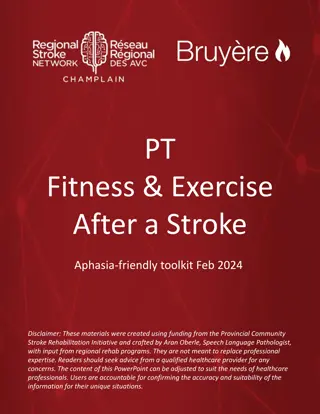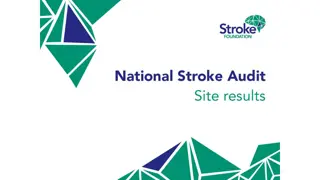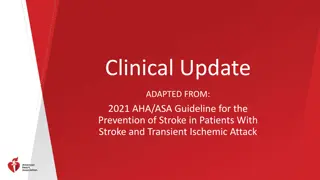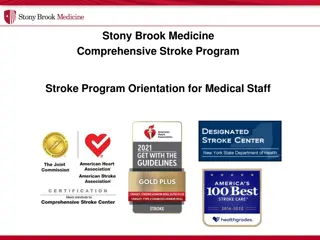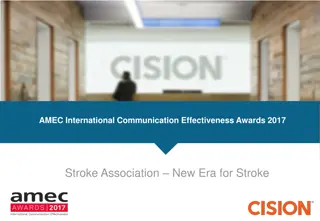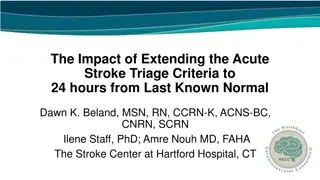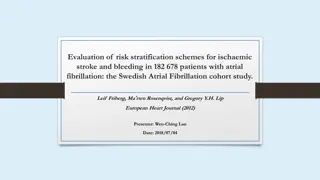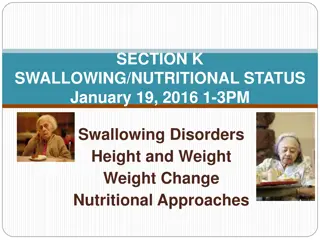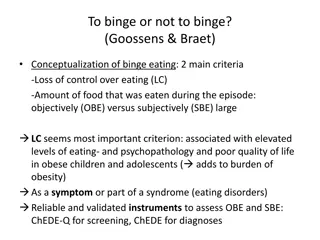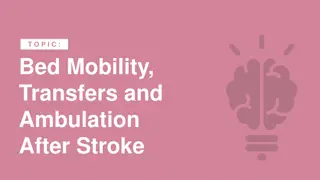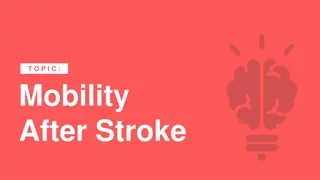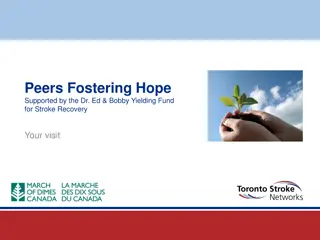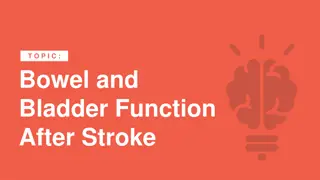Managing Eating and Swallowing Challenges After Stroke
Dysphagia, a common issue after a stroke, can lead to difficulty swallowing and may require texture modifications in food and fluids for safety. Up to 65% of stroke survivors may experience dysphagia, which can lead to complications like pneumonia. Proper oral care, mealtime positioning, and awareness of swallowing difficulties are crucial in managing this condition. Various smart tips and strategies, such as hand hygiene, using assistive devices, and ensuring denture fit, can aid in promoting safe eating and swallowing. Recognizing signs of trouble swallowing, being patient during meals, and maintaining an upright position after eating are essential practices. Encouraging self-feeding when possible and providing a positive and supportive environment can enhance the dining experience for stroke survivors with dysphagia.
Download Presentation

Please find below an Image/Link to download the presentation.
The content on the website is provided AS IS for your information and personal use only. It may not be sold, licensed, or shared on other websites without obtaining consent from the author. Download presentation by click this link. If you encounter any issues during the download, it is possible that the publisher has removed the file from their server.
E N D
Presentation Transcript
T O P I C : Eating and Swallowing After Stroke
Eating and Swallowing After Stroke Dysphagia: Means trouble swallowing Results from damage to the brain May require changes to food textures and liquids for safety 2
Eating and Swallowing After Stroke What you should know: Up to 65% of people will have dysphagia Pneumonia can occur when food or liquids go down the wrong way Oral care should be done before and after meals and at bedtime Poor intake can lead to weight loss and dehydration Social isolation can occur for many people living with dysphagia 3
Eating and Swallowing After Stroke Smart Tips: Perform hand hygiene Ensure the person is alert Use assistive devices as needed Ensure dentures are in place and fit well 4
Eating and Swallowing After Stroke Place yourself face to face and at eye level or sit on the person s unaffected side Check that the person is upright for the meal Ask for help if you are not sure a food is right for the person 5
Eating and Swallowing After Stroke Watch for signs of trouble swallowing: Pocketing of food or pills Taking a long time to eat Drooling or spitting out food Shortness of breath after meals A wet or gurgly voice Throat-clearing Coughing or choking Person reporting issues 6
Eating and Swallowing After Stroke Be patient and avoid rushing Avoid talking when the person is eating Decrease distractions Eat slowly Encourage to feed themself when able Confirm the mouth is clear Let the person know what food they are being offered Be positive! 7
Eating and Swallowing After Stroke Keep upright for 30 minutes after eating Check for pocketing of food Encourage good oral care Use a soft toothbrush 8
Eating and Swallowing After Stroke Seek extra support Swallowing can change over time. If you see any changes, report this to the team immediately Registered Dietitians and Speech Language Pathologists are skilled in eating and swallowing Smart Tips for Stroke Care (2023) was created by members of the Regional Stroke Networks of Ontario. This material may be shared without permission from the authors, without changes and with source credited. 9



